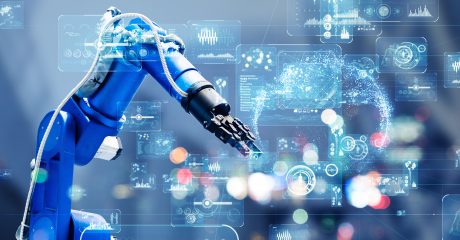To understand the manufacturing industry, it’s important to also understand how related markets play key roles. In this blog we cover the robotics industry and how it plays a role in manufacturing.
Background
The use of robots within the manufacturing industry is becoming a common occurrence. Earlier models of production robots were created to carry out monotonous tasks and were unable to function freely without the assistance of humans. However, things are changing significantly with robots being programmed smarter. They are now starting to take over most tasks that require greater levels of precision and speed.
Robot manufacturing has been accelerating the once slow production process, resulting in smarter and cheaper fundamental production processes. PwC recently reported that fifty-nine percent of companies in the industry are utilizing at least one model of production robot.
Why Robots
The use of robotics is revolutionizing the manufacturing industry. With technology becoming more efficient, intelligent, and accessible, it’s a no brainer to utilize robots to perform more complicated operations. Because robots can move faster and more precisely, they can manage small parts that human eyes and fingers couldn’t. Additionally, robots work tirelessly, they don’t get sick or need days off. These features make robots very valuable to the industry.
Robotic systems are also becoming more cost-effective and at the same time, complications that can interfere with automated tasks are diminishing. With that being said, the likelihood that companies who currently use robotic tools will continue to use them, becomes increasingly large.
Although currently, robots learn by going through different types of patterns and movements. But, with some emerging technologies there is potential to additionally simplify robot programing. The developments in artificial intelligence–or as some call it, AI–and sensor technologies will make it possible for robots to operate more flexibly. Additionally, advancing voice-recognition technology could soon make it possible for robots to receive and understand verbal cues.
Tasks
Normally, factory robots serve as an alternative to manual labor. However, some manufacturing systems use a hybrid model–this system allows human workers to collaborate with robots. Roughly, in all robot manufacturing, production robots take over the following jobs:- Handling of Materials: This involves the transfer of materials as well as the loading and unloading of machines. Most of these tasks are relatively easy and only require the factory robots to collect parts from a single conveyor and place them onto another. An example of a complex transfer task involves putting machine parts on top of pallets in the appropriate configuration.
- Processing Tasks: During these types of tasks a robot operates a device to carry out the proper procedure it’s programmed for. The operations carried out by a production robot can be utilized in spot welding, arc welding, and even spray painting. Other similar tasks that the robots perform include routing, grinding, and polishing.
- Assembly & Inspection: Given the high cost of hiring human workers to perform the same functions, utilization of robots on the assembly line is climbing higher and higher. Because this equipment can be programed so quickly, it’s easy to modify the robot’s programs after each product batch or if there is a change in styles. Robots are also commonly used in the inspection process. In a standard inspection task, the robot uses a sensor to decide whether or not that part complies with quality specifications.
Custom Tool Keeps You Informed
Robotics in manufacturing and artificial intelligence holds a lot of potential for the manufacturing industry. Custom Tool sees that potential and we never settle for subpar. Learn more about how we can help you stay on top of your industry.
